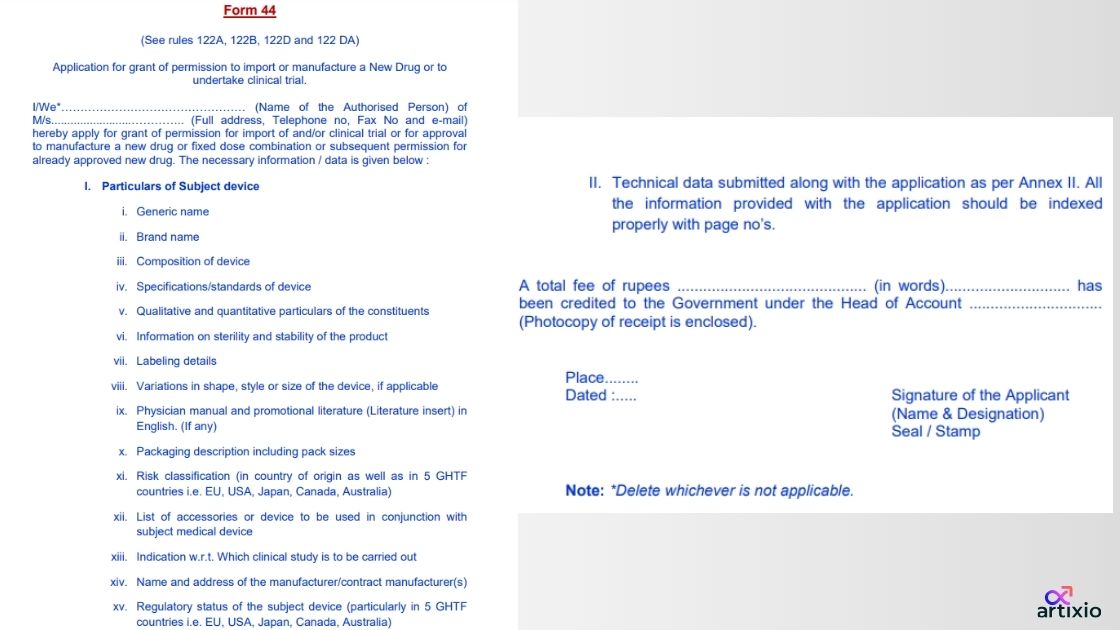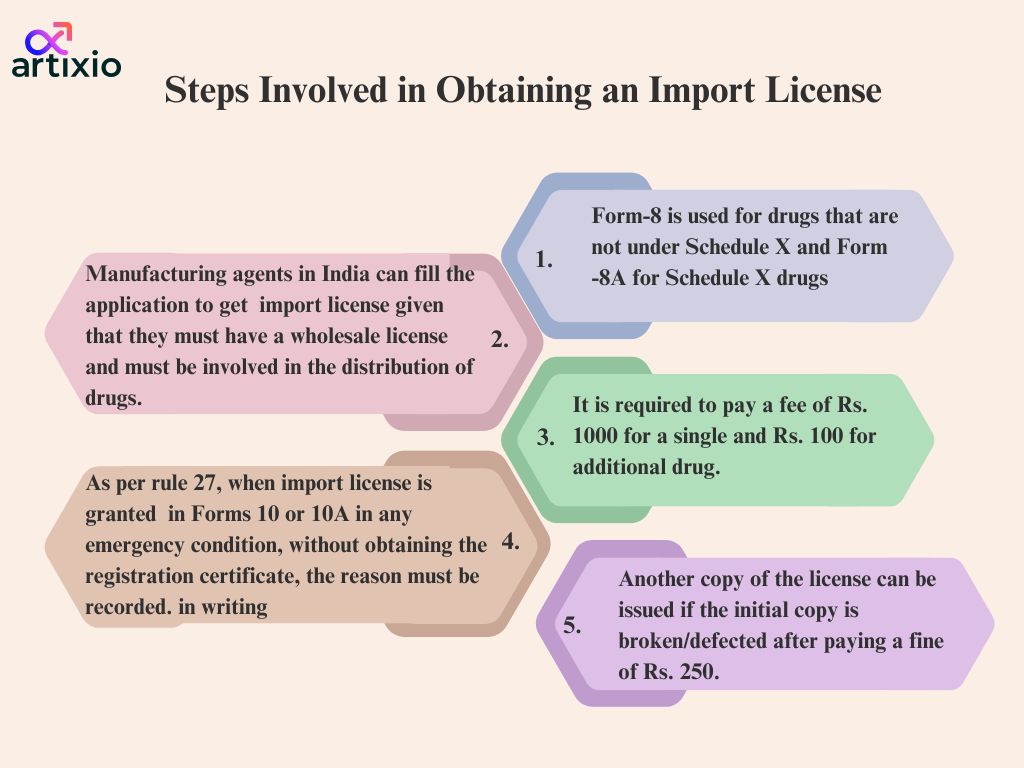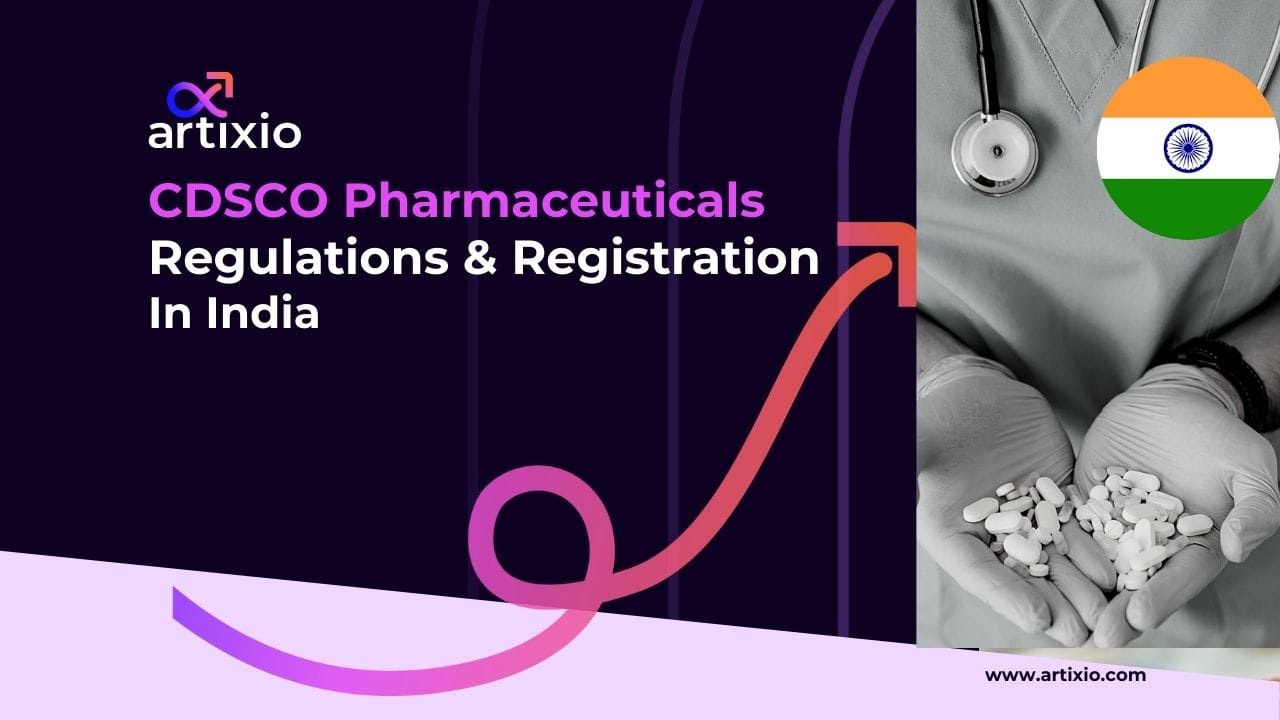India is often referred to as the “Pharmacy of the World” and boasts that it has a pharmaceutical industry which is renowned for its vast capabilities and significant global impact. In the pharmaceutical realm, India is a powerhouse due to its market size being USD 50 billion. An annual consistent growth averaging about 8 to 9% also contributes to this reason. The pharmaceutical sector of India is overseen and regulated by the Central Drug Standard Control Organization (CDSCO).
CDSCO has placed a robust regulatory framework to regulate not only pharmaceuticals but also medical devices, cosmetics, food supplements and veterinary products. CDSCO under the Ministry of Health, Family and Welfare governs the pharmaceutical field by the Drugs and Cosmetics Act 1940 and Rules 1945. The regulatory framework is composed of strict compliance requirements, solid quality standards. The regulatory guidelines evolve constantly to make sure that the safety, quality and efficacy are not compromised for any pharmaceutical product released into the market. The Drug Controller General of India (DCGI) is responsible for the license approval for manufacturing or importing drugs.
Classification of Drugs on the basis of Pharmacological Effect
In pharmaceutical effects they are classified on the basis of Effect they produce on the Human Body for ex- Analgesics (Relieves body pain), Antibiotics (Cure Infections), Antiseptics (Bacteriocidal or Bacteriostatic effect).
Legal Classification of Drug
- Schedule I – High potential of misuse or Addiction with no medical use
- Schedule II – High Potential of misuse but have some physical or psychological use
- Schedule III – Moderate to low potential misuse with psychological use
- Schedule IV – Low potential for dependence with good physical or psychological use
- Schedule V – The drugs used as analgesics, antitussive or antidiarrheal purposes with high physical use.
Therapeutic classification in India is in Alphabetical order which includes Acidifiers, Analgesics, Chelating Agents, Gastrointestinal Agents, Minerals, Pharmaceutic Aid, Stimulants, Vitamins, Wax Emulsifiers and many more drug Classification.
According to the types of medicine drugs are classified as Ayurveda, Unani, Yoga, Neuropathy, Homeopathy
Pharmacology classification by Chemical Makeup includes Alcohol, Opioids, Benzodiazepines, Cannabinoids, Barbiturates
Pharmacology Classification on the basis of Effect includes Depressent, Stimulants, Hallucinogens and Inhalants.
CDSCO governs the rules and regulations under the guidance of D&C Act and taken care by DGCI. In India, The manufacturer or importer needs to apply for form 44 application along with required amount of fees as guided in Schedule Y of D&C Rules for manufacturing or importing any new drug or its formulation for the purpose of marketing or performing any clinical trial in India.

Functions Of CDSCO For Pharmaceuticals
The following are the function of CDSCO:
- New drugs and clinical trial approval.
- Registration, Import and licensing
- Banning drugs and cosmetics that serves as a threat for public safety.
- Amendments to the D&C Act and Rules
- Testing of new drugs
- License approving of r-DNA products, blood banks, vaccines, LVPs, and some medical devices.
- Grant of NOCs for export, test license and personal license
- Oversight and market surveillance
CDSCO SUGAM Portal
The online portal used for licensing or registration processes by CDSCO named as “SUGAM” for the ease of submission, registration, processing, filing applications and fast servicing through online platform. Submissions, reviews and permission or NOC Granting are the services provided by SUGAM portal.
Importer, Indian agent, Enterprise holders or corporate people can register and be an applicant on the SUGAM portal. Manufacturing unit can not directly register through the portal. The Responsible person of the organization after registering gets the approval/ Verification through E-mail. For registering the RP have to submit ID proof, Address proof documents to CDSCO office. There is no need to register again if the person has CDSCO Approval.
Types of drug license under CDSCO Pharmaceutical Regulations in India
1. Wholesale drug license
2. Retail Sale Drug License
3. Manufacturing Drug License
4. Loan License
5. Import License
Documents required for obtaining drug sale license in India
a) Firm/Entity constitution, Company-Articles of Association (AOA), Memorandum of Association (MOA); LLP/Partnership- LLP or Partnership deed agreement
b) Owner/Proprietor/Director/Partner ID Proof
c) Property Ownership or Rental Agreement document
d) Any proof for storage, Refrigerator or Cold Storage availability.
e) Registered pharmacist affidavit
f) Premises Site plan and Key plan
g) Board resolution permit proof and challan copy
h) MPD 2021 Compliance Affidavit if the premise is located on DDA region
Documents required for retail sale pharmacist
a) Local pharmacy council registration
b) Letter of appointment
c) Qualification proof
Documents required for wholesale pharmacist
a) Letter of Appointment
b) Qualification proof
c) Certificate of Experience
Registration pathway for pharmaceutical products
1. New Drug Approval-
The Efficacy and Safety of the product is the first priority for approval process. It needs to check that the drug falls under the pharmacological activity and safe for human use. The CDSCO and Officer leader established Drugs Controller General (India) (DGCI).
Schedule Y under D & C rules give the information about requirements and guidelines for clinical trials which were further categorized as CATEGORY A (trials conducted in other market) and CATEGORY B (remaining ones fall under this category).
The drug approval process is comprised of two steps – a) Application for conducting clinical trial and b) Marketing Authorization request for drug from regulatory authorities.
The categories that adhere for the application process are Category A, B, C, D and E.
2. Certificate of Import Registration-
This registration is only for the importers wants to import drugs. Application is placed for issuing import registration certificate along with the required amount of fee to be paid with it. It can also be charged for the inspection fee and the DGCI either approve the GMP certification from the advanced countries such as EU, US or inspect on their own against Indian GMP. This process may take longer time.
3. License for Import-
The import license is to be issued by the foreign importers specified in Rule 10 and Rule 10A. Rule 24 of D&C Rules deals with requirements for obtaining license. Application is placed for import license before placing the importer must have Wholesale Drug License and other required licenses according to D&C Rules. Generally within 3 Months from the date of application the license is issued.

If a pharmaceutical product has already been approved in the United States (US) or European Union (EU), it can streamline the registration process of that same drug in India. The approval of a drug by regulatory authorities like the FDA (US Food and Drugs Administration) in the US and EMA (European Medicines Agency) in the EU is considered to be a significant achievement and has value to it. While evaluating a drug for its registration, the regulatory authorities of India take these approvals into consideration.
Clinical trial requirements in India
In India, the Clinical trial requirements for drug approval is governed by CDSCO under the Drugs and Cosmetics Act and Rules. To get marketing authorization of a drug in India, it is important to conduct the clinical trials in India. Below are some key guidelines and requirements for clinical trials in India:
Clinical Trial Approval: Before the conduct of any clinical trials in India, an approval is required from CDSCO via the office of DCGI. This approval is gained through the submission of Clinical Trial Application (CTA). Along with CTA, a detailed study protocol, investigator’s brochure and all other relevant documents.
Ethics Committee Approval: Apart from regulatory approval, it is important to get approval from an independent Ethics Committee registered with CDSCO. This is essential to make sure that the trial will be conducted by protecting the patient safety, rights and well-being of the trial participants. It is the responsibility of the EC to ensure the trial is conducted in an ethical manner.
Compensation and Insurance: If any trial related injuries or deaths happen to the trial participants, an appropriate compensation must be provided. This is required to be done by the sponsor. A clinical trial insurance is compulsory to cover the liabilities (if any) that arise at the time of clinical trial.
Good Clinical Practice (GCP): It is a mandatory regulatory requirement to be in compliance with the GCP standards. Any clinical trials conducted must follow the GCP. This is the same for the clinical trials conducted in India as well. The principles of GCP are outlined in the International Council for Harmonisation (ICH-GCP). Compliance with GCP guarantees ethical and scientifically sound conduct of clinical trials and data reliability.
Informed Consent: Participants must be explained about the objectives, procedure, benefits and potential risk that can occur. No participants must be forced into a clinical trial. It must always be their own choice whether to be a part of the trail or not. So, informed consent must be obtained from each participant before their inclusion in the study. If the participant is not in a right state to give informed consent (children, unconscious state, diseases like Alzheimer’s), their legally authorized representative can provide the consent.
Safety Reporting: Prompt reporting of any adverse event that occurs during the trial should be reported to the Ethics Committee and the regulatory authority. This is required to be done by the Sponsor and investigator.
Clinical Trial Registry: Clinical Trial Registry – India (CTRI) is a publicly accessible clinical trial registry. Before the enrolment of the first trial participant, it is mandatory to register the clinical trials in CTRI as per the drug licensing authority, DCGI.
The permission to initiate the conduct of a clinical trial is granted in Form CT – 06 or Form CT 4A (automatic approval). This remains valid for a period of 2 years from the date of issue unless it is extended by the Central Licensing Authority.
Drug License & Manufacture Cost In India
There are different forms to be used for specific type of sale licensing. Application form 19 (19-A for restricted type of sale) is used to apply for license for wholesale and retail sale of drugs other than that specified in Schedule C&C (1) &X, Drugs specified in Schedule C&C (1) & not specified in Schedule X. For drugs under Schedule X, the application form in 19-C. Similarly, the fee structure also varies. The fee is as follows:
| Category | Type | Fees |
| Drugs: other than that, specified in Schedule C&C (1) &X | Wholesale
Retail Restricted |
Rs 1500
Rs 1500 Rs 500 |
| Drugs: Specified in Schedule C&C (1) ¬ specified in Schedule X | Wholesale
Retail Restricted |
Rs 1500
Rs 1500 Rs 500 |
| Drugs in Schedule X | Wholesale
Retail |
Rs 500
Rs 500 |
| Application for | Fees Applicable |
| Permission to manufacture new drugs, Finished formulation or API, for sale or distribution | Rs 5,00,000 |
| Permission to manufacture new drugs, finished formulation or API, which are already approved for sale or distribution | Rs 2,00,000 |
** The fees are subjected to change and must confirm it by referring to the official website before making any payments**

Timeline
The time required for Import registration certificate is generally 9 months from the date of application. It takes about 180 days for the approval or registration of new drug. It takes about 3 months for the registration of cosmetic product.
CDSCO Labelling Requirements For Drugs In India
The labelling requirements must be as per the Drugs and Cosmetics Rules 1945. Part IX specifies the requirements to be followed in detail. The manner of labelling is as follows:
- Name of the drug
- An accurate statement about the net content in terms of weight, volume, measure, number of units of contents, number of units of activity (as the case may be) and the weight, measure and volume be expressed in metric system.
- Content of active ingredients
- Manufacturer’s name and the address of the premises where the drug has been manufactured.
- A distinctive batch number, that is to say, the number of the particular batch from which the substance in the container is taken are recorded and are available for inspection. The figure representing the batch number must precede the words ”B. No.” or ”Batch No.” or ”Batch” or ”Lot” or ”Lot No.”.
- Requirements for labelling of Schedule X drugs, drugs for export, etc are mentioned under Part IX of the Drugs and Cosmetics Rules 1945.
Post Marketing Surveillance under CDSCO Pharmaceutical Regulations in India
Adverse Drug Reaction (ADR) Reporting: Doctors, Pharmacists or any other healthcare professionals are required to report any ADR observed during the treatment. The public can also report ADR.
Pharmacovigilance Programme of India (PvPI): For monitoring the safety of pharmaceutical products in India, CDSCO launched PvPI, a national programme. The PvPI operated through different Adverse Drug Reaction Monitoring Centres (AMCs) and Regional Pharmacovigilance Centres (RPCs) across the country. These centres gather and analyze the data regarding the adverse drug reactions and submit these data to the Global Database. The Global database is maintained by Uppsala Monitoring Centre, Sweden.
Signal Detection and Analysis: The regulatory authorities, pharmaceutical companies as well as other stakeholders analyze the adverse drug reaction data continuously. This is done to identify any patterns or signals that indicate safety issues. If any potential signals or patterns are found that concerns the safety, further investigation and respective regulatory action may be required.
Risk Evaluation and Mitigation Strategies (REMS): In some cases, the safety profile of a drug might need additional risk management. So, to make sure the safe use of drugs, the regulatory authority strategies for risk evaluation and mitigation. Health professionals’ education programs, patient medication guides as well as other risk minimization measures are involved in REMS.
Periodic Safety Update Reports (PSURs): It is mandatory to submit PSURs to the regulatory authorities by the pharmaceutical companies. These reports provide a summary of the drug’s safety data over a period of time, and it involves an overall safety assessment. The timeline for the submission of PSUR for a new drug is every 6 months for the first 2 years and annually for the next 2 years.
Since India’s pharmaceutical industry is evolving continuously, the regulatory requirements also change frequently. Navigation through these is crucial for the stakeholders seeking to capitalize on marketing opportunities while compliancing with all the applicable laws and regulations. India’s robust regulatory framework and rapid change in market dynamics, creates immense potential for the pharmaceutical companies targeting to expand globally and to make a meaningful impact on the healthcare industry.
FAQ’s
Q. What are some of the responsibilities of CDSCO?
Drug approval, conducting clinical trials, defining the standards for drugs, controlling the quality of drugs and coordinating the activities of the State Drug Control Organization are some of the responsibilities of CDSCO.
Q. What is the fee structure for import registration of drugs?
1500 USD or Rs. 1,30,723 must be paid by the applicant as registration fee for manufacturing premises. 1000 USD or Rs. 87,148 is the registration fee to be paid for a single drug and for each additional drug for which the manufacturing site remains the same, an additional fee of 1000 USD must be paid.
Q. When is registration renewal or re-registration done?
Application must be submitted 9 months before the expiration date of the registration certificate for the renewal of the registration or re-registration.
Q. What are the main bodies involved in the Pharmaceutical sector of India?
The main bodies involved are: Central Drug Standard Control Organization (CDSCO), Ministry of Health & Family Welfare (MHFW), Indian Council of Medical Research (ICMR), Indian Pharmaceutical Association (IPA), Drug Technical Advisory Board (DТАВ), Central Drug Testing Laboratory (CDTL), Indian Pharmacopoeia Commission (IPC) and National Pharmaceutical Pricing Authority (NPPА).
At Artixio, our team of experts try to understand every aspect of the novel or generic products in context of Indian market and provides high quality end-to-end solutions regulatory solutions for registration and post approval maintenance of pharmaceutical products. Stay tuned to Artixio for more insights into pharmaceutical regulations and market trends, and reach out to us at info@artixio.com for personalized regulatory support tailored to your needs.
References:
- https://cdsco.gov.in/opencms/resources/UploadCDSCOWeb/2018/UploadPublic_NoticesFiles/faqnd.pdf
- https://cdsco.gov.in/opencms/opencms/en/PvPI/




